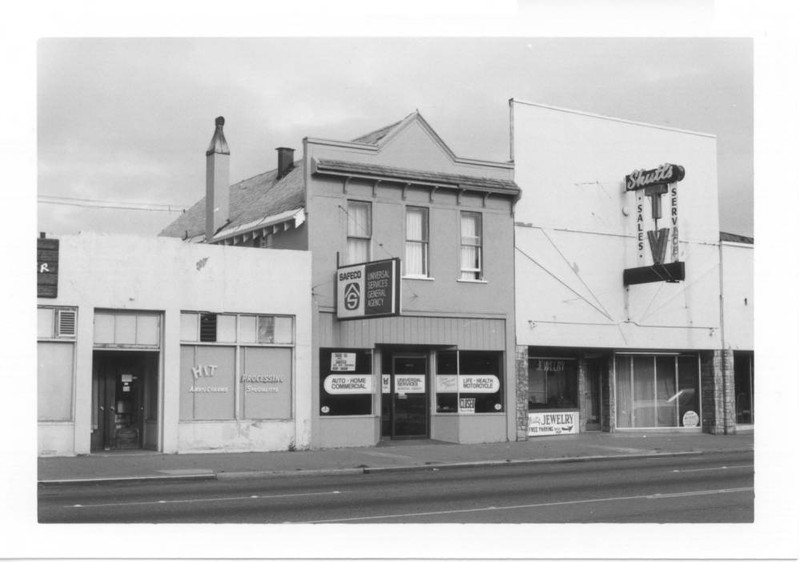5222 South Tacoma Way (1900)
Introduction
Text-to-speech Audio
Constructed in around the turn of the century, this building originally housed the popular Edison Soft Drink Parlor. Tacoma had several soft drink manufacturing companies located in the Warehouse/Brewery district, near the waterfront. Although advertising soft drinks, the shop also served as a speakeasy for part of the prohibition years.
Images
5222 South Tacoma Way (1900)

Backstory and Context
Text-to-speech Audio
Constructed in around the turn of the century, this building originally housed the popular Edison Soft Drink Parlor. Tacoma had several soft drink manufacturing companies located in the Warehouse/Brewery district, near the waterfront. Although advertising soft drinks, the shop also served as a speakeasy for part of the prohibition years. The police had long suspected the shop was selling alcohol, and during the summer of 1925 Tacoma police officer Roy Colyar discovered a secret storage area with 141 pints of beer and three gallons of moonshine. “Bartender” George Paschild was arrested for the possession of alcohol and the building sat vacant for a number of years after this. By 1940, Volunteers of America was occupying the building. This national organization provided charitable assistance to the South Tacoma neighborhood, and specialized in housing and healthcare services. The non-profit group relocated in 1942. After a few years of vacancy, the structure became the home of Teresa’s Café in 1945. The café was owned by Teresa and John Cacciaguidi. The Cacciaguidis lived in the neighborhood, at 4545 South Lake Union Avenue. John died in the 1950s and Teresa remained at this address until 1979.
This two-story structure has been altered over the years. The gable front (which is more common in housing forms than commercial buildings) may indicate that this structure first served as a residence. The exposed rafter tails that extend beyond the front façade of the structure are not typical in commercial buildings and are common in early 20th century houses. The upper corners of the façade are false front, and give the structure a larger, more imposing street presence than the actual mass of the building. The narrow, evenly spaced double-hung windows are common for the second floors of commercial buildings. Second floors typically housed either professional offices or living space for the building owners or the commercial occupants on the first floor. The entry level of the building is completely commercial in its design. The recessed entry door and large sheet glass windows, while not original are likely in this historic location. The transoms that were probably above the main entry and the display windows were filled in at some point.
Sources
Historic South Tacoma Way. Tacoma, WA. Historic Tacoma Press, 2011.
Tacoma Public Library, BU-2518
